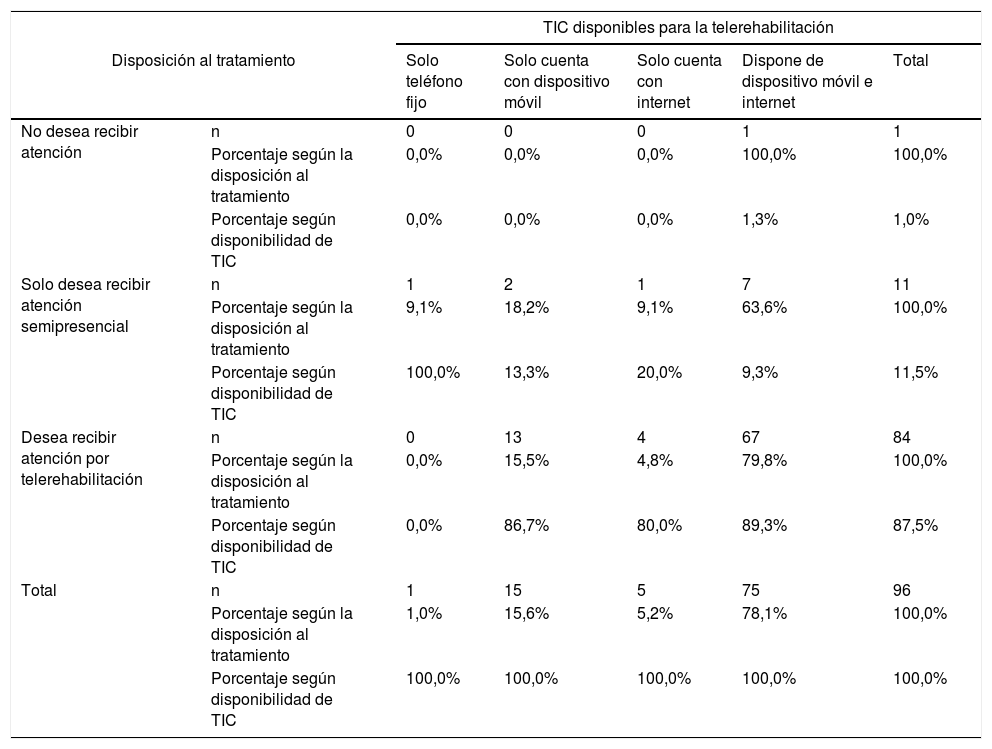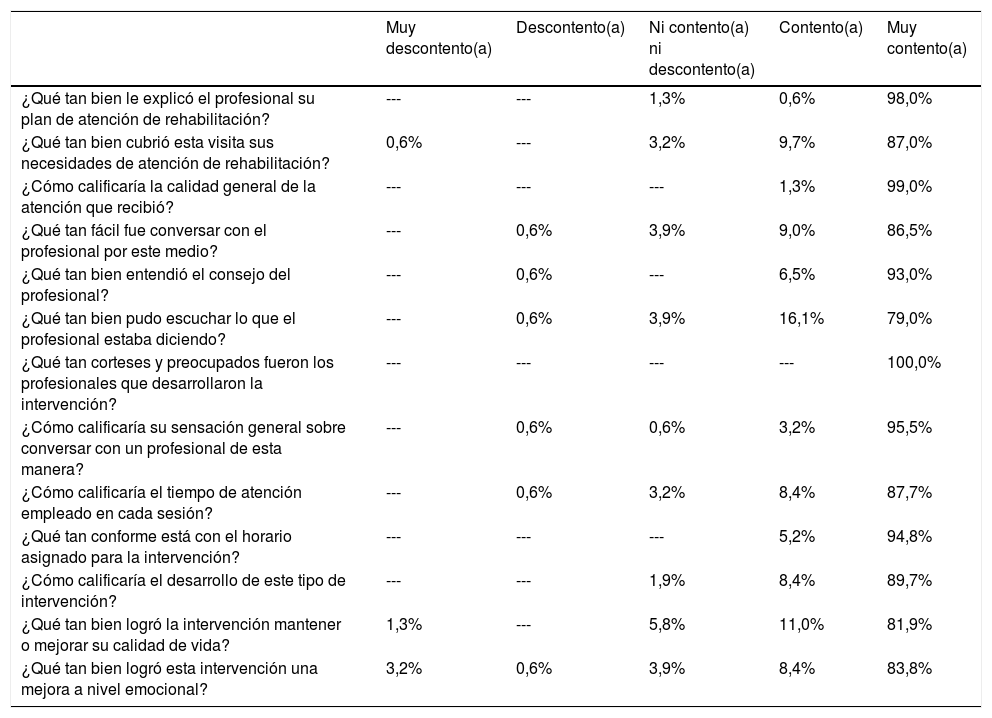La situación sanitaria generada por la aparición de la COVID-19 ha precipitado el uso de nuevas tecnologías y la adaptación de los servicios de rehabilitación de todo tipo.
ObjetivoDescribir la implementación de un sistema de telerehabilitación en pacientes con diferentes diagnósticos de discapacidad que viven en alta latitud sur, durante la pandemia de COVID-19.
MétodosSe implementó un sistema de terapias personalizadas guiadas mediante videoconferencia para pacientes con diferentes diagnósticos de discapacidad. Los pacientes se agruparon en tres grupos etarios (menores, adultos, adultos mayores) y seis tipos de diagnóstico clínico (afecciones originadas en el periodo perinatal, enfermedades del sistema circulatorio, enfermedades del sistema nervioso, enfermedades del sistema osteomuscular y del tejido conjuntivo, tratamientos mentales y del comportamiento y otro tipo de diagnósticos). Se evaluó el diagnóstico del paciente, el tipo de atención requerida, el número de sesiones y el nivel de satisfacción de cada usuario en función de la telerehabilitación que recibieron.
ResultadosParticiparon 101 pacientes con edad promedio de 31±26 años, siendo el 52,5% de estos del sexo masculino. Todos ellos logran manejar tecnologías mínimas requeridas para la atención por telerehabilitación. Existe un grado de asociación entre el diagnóstico del paciente y el grupo etario (p<0,05), así como también entre el diagnóstico y el tipo de atención requerida (p<0,05). Tras la implementación, los usuarios y usuarias evalúan positivamente la terapia a distancia.
ConclusionesLa telerehabilitación puede ser implementada en pacientes con discapacidad en zonas de alta latitud sur, respetando las diferentes etapas del proceso, para asegurar una correcta ejecución.
The health situation after the emergence of COVID-19 has precipitated the use of new technologies and the adaptation of rehabilitation services of all kinds.
ObjectiveTo describe the implementation of a telerehabilitation system in patients with different diagnoses of disability living in the high southern latitude during the COVID-19 pandemic.
MethodsA system of personalized therapies guided by videoconference was implemented for patients with varying diagnoses of disability. The patients were grouped into three age groups (Minors; Adults; Older Adults) and six types of clinical diagnosis (conditions originating in the perinatal period, diseases of the circulatory system, diseases of the nervous system, diseases of the musculoskeletal system, and connective tissue, mental and behavioural treatments and other diagnoses). The patient's diagnosis, the type of care required, the number of sessions, and the level of satisfaction of each user were evaluated based on the telerehabilitation they received.
Results101 patients with an average age of 31±26 years participated, 52.5% were male. All of them managed to handle the minimum technologies required for telerehabilitation care. There is a degree of association between the patient's diagnosis and the age group (p<.05), as well as between the diagnosis and the type of care required (p<.05). After implementation, users positively evaluated distance therapy.
ConclusionsTelerehabilitation can be implemented in patients with disabilities in areas of high southern latitude, respecting the different stages of the process, to ensure it is correctly delivered.
Article
Si ya tiene sus datos de acceso, clique aquí.
Si olvidó su clave de acceso puede recuperarla clicando aquí y seleccionando la opción "He olvidado mi contraseña".










